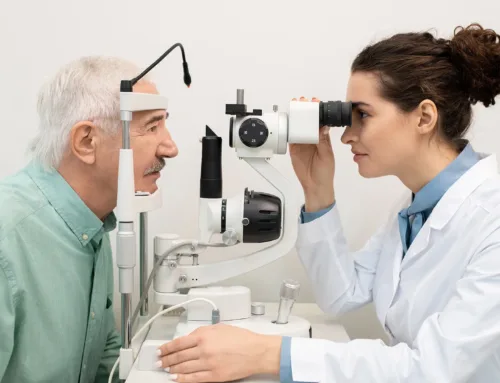In case you’re pressed for time as you start reading this, I’ll save you the hassle of trying to find the point where I stop droning on and on before I answer the question. No. LASIK can’t fix cataracts. There is a technology available today called laser cataract surgery. It works really well, and it can fix cataracts beautifully. LASIK, however, is a different procedure that uses lasers to correct vision in a different way. It is a fantastic procedure that can cure a multitude of visual difficulties, but it remains powerless against cataracts.
Two Reasons For Blurred Vision
The reason for the difference between LASIK (useless for cataracts) and laser cataract surgery (curative for cataracts) is that there are two main reasons for an eye to see blurry. If you’re an exam writer for the American Board of Ophthalmology reading this, I want to clarify that there are thousands of reasons for decreased vision. If you’re anyone else (and it is certain you are because those guys exclusively read big leather-bound books) then all the rare and exotic reasons for blurry vision combined are a tiny fraction of the two main reasons. So, we can ignore those for this discussion, and ideally for all discussions.
Refractive Error
If you use a pair of glasses or know someone who does, it’s easier to visualize the two reasons for vision to be blurry in the context of those glasses. The first reason is a refractive error. The refractive error just means the prescription is wrong for that eye. If you look through your glasses and see great, that’s because you’ve corrected the refractive error of your eye. If you borrow someone’s glasses and everything is blurry, you’re seeing blurry because of refractive error. The prescription is wrong.
Obstruction
There are times, however, when the vision can be blurry even when there is no refractive error. Those times are an example of the second main reason for vision to be blurry, which is because of an obstruction. Back to the glasses, if you look through your glasses and see great (because you’ve corrected your refractive error) there’s still a way those glasses could become blurry even with the right prescription. What if someone smeared a thin layer of Vaseline on the lenses? Well, first off you should cut that person out of your life immediately. But what they would have left you with is an obstructive vision problem. The blur from those correctly-prescribed, Vaseline-smeared glasses would be so terrible you may see better if you just took them off.
LASIK fixes the first problem. Its wheelhouse is a refractive error, and it dominates that wheelhouse. It’s so good at fixing it that it is sometimes assumed it can fix the other main cause. When there is an obstruction—when your lens is made cloudy, whether by Vaseline or by cataracts—the solution is to remove the obstruction. Cataract surgery lets you get the blur out of the way by removing that lens, and as a bonus, replacing it with a new, permanently clear lens. The best way to correct your vision is to correct the problem causing it. In this case, it may just mean that God closes a door and opens a Vaseline-smeared window so you can finally see again.




